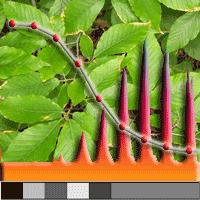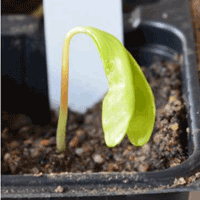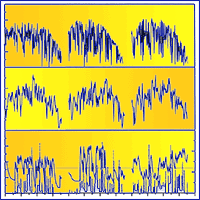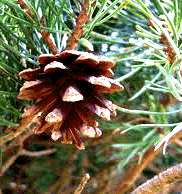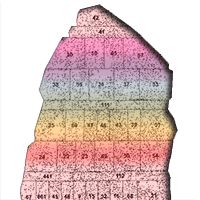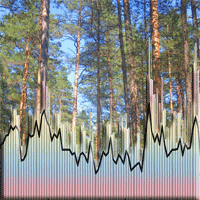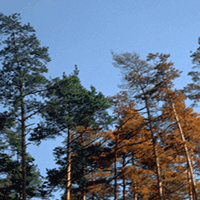
Coping with spring frost-effects on polyamine metabolism of Scots pine seedlings
Riina Muilu-Mäkelä (1-2) , Jaana Vuosku (2), Markku Saarinen (1), Leena Hamberg (3), Seppo Ruotsalainen (4), Hely Häggman (2), Tytti Sarjala (1)
iForest - Biogeosciences and Forestry, Volume 10, Issue 1, Pages 227-236 (2017)
doi: https://doi.org/10.3832/ifor2003-009
Published: Jan 27, 2017 - Copyright © 2017 SISEF
Research Articles
Abstract
Polyamines (PA) are ubiquitous polycations known to be involved in several phases of plant development as well as in tolerance to abiotic stresses. Phenols are complex secondary metabolites produced via the phenylpropanoid pathway that contain, e.g., cell wall compounds and antioxidants. Phenols are known to enhance chilling tolerance of plants. PA and phenolic pathways are connected via conjugation. In boreal coniferous forests spring frost has been considered to have severe effects on the survival of tree seedlings. Such effects are likely to increase in the future. The present study focuses on the role of PA and phenylpropanoid syntheses in the coping strategies of Scots pine exposed to cold temperatures during the vulnerable early seedling phase in late spring and early summer. We found that spring frost affects the expression of genes regulating PA metabolism and phenylpropanoid synthesis differently in above and below ground parts of the seedlings, whereas PA or phenol contents in tissues were not affected. The results suggest that Scots pine seedlings may not have time to develop metabolite level responses during a short period of freezing stress and, therefore, the originally different PA levels, especially in roots, may influence the tolerance of Scots pine seedlings to spring frost.
Keywords
Authors’ Info
Authors’ address
Markku Saarinen
Tytti Sarjala
Natural Resources Institute Finland (Luke), Parkano Research Unit, FI-39700 Parkano (Finland)
Jaana Vuosku
Hely Häggman
Genetics and Physiology department, University of Oulu, P.O. Box 3000, FI-90014 Oulu (Finland)
Natural Resources Institute Finland (Luke), Vantaa Research Unit, FI- 01370, Vantaa (Finland)
Natural Resources Institute Finland (Luke), Punkaharju Research Unit, FI-58450, Punkaharju (Finland)
Corresponding author
Paper Info
Citation
Muilu-Mäkelä R, Vuosku J, Saarinen M, Hamberg L, Ruotsalainen S, Häggman H, Sarjala T (2017). Coping with spring frost-effects on polyamine metabolism of Scots pine seedlings. iForest 10: 227-236. - doi: 10.3832/ifor2003-009
Academic Editor
Mike Perks
Paper history
Received: Feb 05, 2016
Accepted: Nov 27, 2016
First online: Jan 27, 2017
Publication Date: Feb 28, 2017
Publication Time: 2.03 months
Copyright Information
© SISEF - The Italian Society of Silviculture and Forest Ecology 2017
Open Access
This article is distributed under the terms of the Creative Commons Attribution-Non Commercial 4.0 International (https://creativecommons.org/licenses/by-nc/4.0/), which permits unrestricted use, distribution, and reproduction in any medium, provided you give appropriate credit to the original author(s) and the source, provide a link to the Creative Commons license, and indicate if changes were made.
Web Metrics
Breakdown by View Type
Article Usage
Total Article Views: 50030
(from publication date up to now)
Breakdown by View Type
HTML Page Views: 42029
Abstract Page Views: 2867
PDF Downloads: 3798
Citation/Reference Downloads: 36
XML Downloads: 1300
Web Metrics
Days since publication: 3267
Overall contacts: 50030
Avg. contacts per week: 107.20
Citation Metrics
Article Citations
Article citations are based on data periodically collected from the Clarivate Web of Science web site
(last update: Mar 2025)
Total number of cites (since 2017): 3
Average cites per year: 0.33
Publication Metrics
by Dimensions ©
Articles citing this article
List of the papers citing this article based on CrossRef Cited-by.
References
Involvement of Pinus taeda MYB1 and MYB8 in phenylpropanoid metabolism and secondary cell wall biogenesis: a comparative in planta analysis. Journal of Experimental Botany 59: 3925-3939.
CrossRef | Gscholar
Abscisic acid, H2O2 and nitric oxide interactions mediated cold-induced S-adenosylmethionine synthetase in Medicago sativa subsp. Falcate that confers cold tolerance through up-regulating polyamine oxidation. Plant Biotechnology Journal 12: 601-612.
CrossRef | Gscholar
Correlating gene expression to physiological parameters and environmental conditions during cold acclimation of Pinus sylvestris, identification of molecular markers using cDNA microarrays. Tree Physiology 26: 1297-1313.
CrossRef | Gscholar
Analyses of the spring phenology of boreal trees and its response to climate change. University of Helsinki, Department of Forest Ecology Publications 22, Helsingin yliopiston verkkojulkaisut, Helsinki, Finland, pp. 55.
Gscholar
Water availability influence morphology, mycorrhizal associations, PSII efficiency and polyamine metabolism at early growth phase of Scots pine seedlings. Plant Physiology and Biochemistry 88: 70-81.
CrossRef | Gscholar
Metsänkylvöopas - Kylvön biologiaa ja tekniikkaa [Forest sowing book - biology and techniques of sowing]. Metsäntutkimuslaitos, Vantaa, 85 s. [in Finnish]
Gscholar
Cross-talk between reactive oxygen species and polyamines in regulation of ion transport across the plasma membrane: implications for plant adaptive responses. Journal of Experimental Botany 65: 1271-1283.
CrossRef | Gscholar
Männyn kylvö ja luontainen taimettuminen vanhoilla ojitusalueilla - turvemaiden uudistamisen erityispiirteitä [Artificial and natural seeding of Scots pine in old drainage areas - Unique features of forest regeneration on peat lands]. Dissertationes Forestales 164, University of Helsinki, Finnish Society of Forest Science, Helsinki, Finland, pp. 64. [in Finnish]
Gscholar
Health from forest - Antioxidative properties of endophytic fungi from Scots pine roots. In: Proceedings of the 7th International Conference on “Mushroom Biology and Mushroom Products - ICMBMP7” (Savoie J-M, Foulongne-Oriol M, Largeteau M, Barroso G eds). Arcachon (France) 4-7 Oct 2011. INRA, UR1264, Mycology and Food Safety, Bordeaux, France, vol. 2, pp. 103-109.
Gscholar

